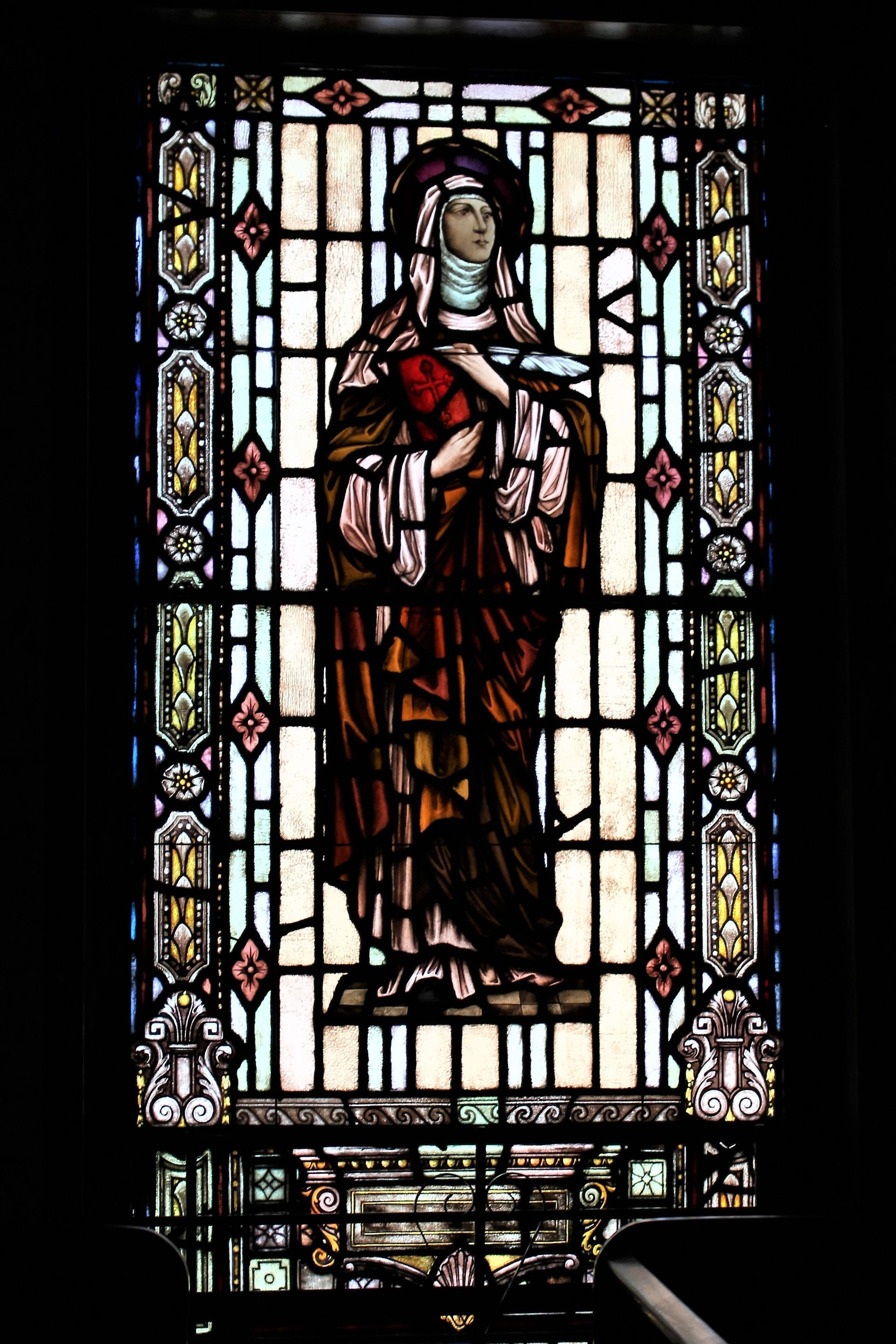Saint Teresa of Avila
Saint Teresa of Avila is the subject of the stained-glass window on the left at the front of the Church. It shows St. Teresa holding a book and feather pen.
St. Teresa was a Spanish noble, daughter of Don Alonso Sanchez de Cepeda and Doria Beatriz. Crippled by disease in her youth, which led to her being educated at home, she was cured after praying to Saint Joseph. Her mother died when Teresa was 12. Her father opposed her entry to religious life because he loved her very much. She left home without telling anyone, and entered a Carmelite house at 17. Seeing her conviction to her call, her father and family consented.
The church in the 16th century was in desperate need of reform. So as might be expected, Teresa of Avila was one of the staunch defenders of the Catholic faith. She spent the latter half of her life restoring Carmelite spirituality to its historic authenticity. She considered her original house too lax in its rule, so she founded a reformed convent of St. John of Avila.

She founded several houses, often against fierce opposition from local authorities. After the houses were founded, her opposition realized the houses were a blessing to the towns and supported them.
She was proclaimed a Doctor of the Church on Sept. 27, 1970 by Pope Paul VI. Her published writings span the whole gamut of the Church's teaching. Among them are the doctrines of the Real Presence of Christ in the Holy Eucharist. She describes the deep secrets that God revealed to her after she had received Holy Communion. She says that God the Father bestows on us indescribable blessings through the humanity of His Only Son. It is impossible to overestimate the importance of this truth. Certainly, the graces we receive come to us from God, but, they come to us through the humanity which Second Person of the Holy Trinity assumed when He became man.
So, the book and pen she holds in the image of our stained glass represents her as a Doctor of the Church.
- Died: March 28, 1582. Her body is incorrupt, her heart shows signs of Transververation (piercing of the heart).
- Patronage: body ills, headaches, loss of parents, religious orders, people ridiculed for their piety, and the sick.





